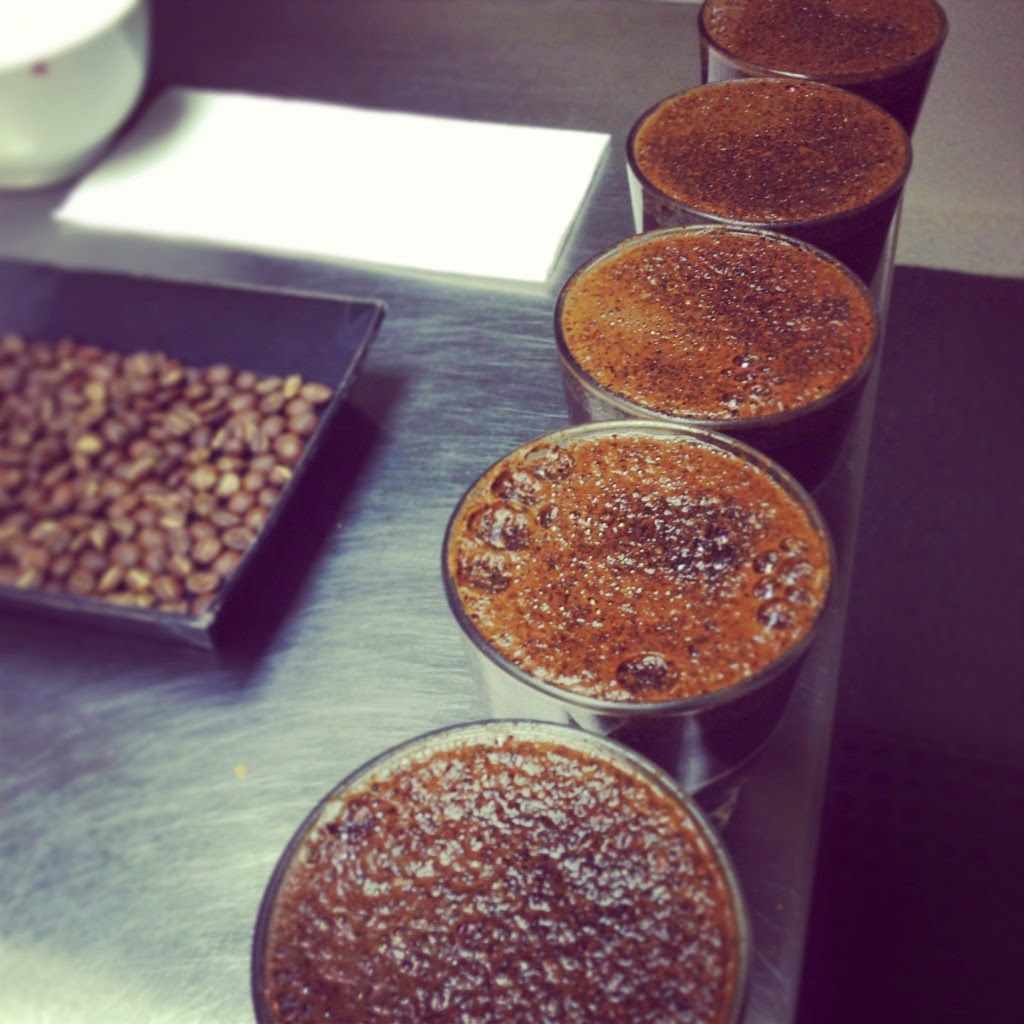Cupping is the examination of the taste and aromas of brewed coffee. This is done to test a roasted sample of coffee to help in a purchasing decision. In our case cupping is also done to ensure the quality and consistency of the coffees we are producing. This offers us insight into the nuances of a particular crop and the effect of processing techniques employed in the case of other coffees. We cup the coffees many times to ensure the best micro lots are selected for export.
The standard coffee cupping procedure involves sniffing the coffee and loudly slurping the coffee so that it spreads to the back of the tongue. By doing this one is able to assess all aspects of the coffee: its body (texture or mouth-feel), sweetness, acidity, flavor, and aftertaste. Cupping in this way also enables one to detect any defects in the coffee that might not have been noticeable in the green beans. Below are some aromas, tastes and mouth-feels we look out for when cupping coffees:
Aromas:
Animal-like: wet fur, sweat, leather hides – not necessarily considered negative but generally used to describe strong notes
Ashy: smell of an ashtray, not used as negative attribute but to indicate the degree of roast
Burnt/Smokey: Burnet wood odor, frequently used to indicate degree of roast. More commonly found in dark-roasted or oven roasted coffees
Chemical/Medicinal: used to describe coffees that have aromas such as rio flavor, chemical residues or highly aromatic and volatile coffee.
Chocolate-like: aroma and flavor of cocoa powder and chocolate
Caramel: smell and flavor produced with caramelizing sugar without burning it.
Cereal/Malty/Toast-like: a grain type aroma and terms used interchangeably by tasters
Earthy: smell of fresh, wet soil or some people might even say the smell of humus. Sometimes this is associated with moulds and raw potato flavor.
Floral: associated with the slight scent of flowers: honeysuckle, jasmine, dandelion, nettles. Found in intense fruity or green aroma is perceived.
Fruity/Citrus: natural aroma of berries. Most coffees with citrus characteristics tend to be high in acidity. This does not describe an unripe nor overripe fruit.
Grassy/Green/Herbal: the smell of a freshly mown lawn, fresh green grass or herbs
Nutty: aroma and flavor of fresh nuts – not rancid nuts nor bitter almonds
Rancid/Rotten: Rancid is an indicator of fat oxidation (rancid nuts) and rotten is deteriorated vegetables.
Rubber-like: smell of hot tires, rubber bands. It is not necessarily considered a negative attribute but it is a strong one.
Spicy: odor of sweet spices such as cloves, cinnamon and allspice. This term does not describe savory spices.
Tobacco: smell and taste of fresh tobacco – but not to be confused with ashy or burnt tobacco.
Winey: a combination of smell, taste and moth-feel as when drinking wine. Strong acidic/fruity notes are found. Careful not to confused with a sour/fermented flavor.
Woody: smell of dry wood, an oak barrel or even cardboard paper
Taste:
Acidity: Desirable sharp and pleasing taste not an over-fermented sour taste.
Bitterness: Taste considered to be desirable up to a certain level. Bitterness is affected by the degree of roast and brewing method used.
Sweetness: Derived by the solutions of sucrose or fructose, which are associate with sweet aroma such as fruity, chocolate and caramel.
Saltines: Also know as the Umami flavor.
Sourness: excessively sharp, biting and unpleasant flavor. Sometimes associated with the aroma of fermented coffee.
Mouth-feel:
Body: descriptor of the physical properties of the coffee.
Astringency: characteristics of an after-taste, which creates a dry feeling in the mouth. This attribute is undesirable in coffee.



No comments:
Post a Comment